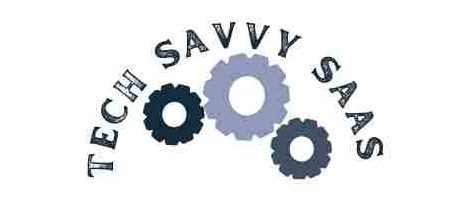In today’s fast-paced digital realm, the concept of SaaS Symphony is paramount. As businesses navigate the ever-evolving landscape of technology and innovation, Software as a Service (SaaS) emerges as a key player in reshaping traditional paradigms. Gone are the days of static, on-premise software solutions. Instead, organizations are increasingly turning to cloud-based services to streamline operations, enhance efficiency, and drive growth.

The SaaS Overture
- The SaaS Overture
- Defining SaaS and Its Impact:
- Orchestrating the Technology Stack
- How can businesses create a harmonious tech stack to optimize performance and efficiency?
- Conducting business strategies
- How can organizations align technology investments with overarching business objectives for sustainable growth?
- The Collaborative Cadence
- How do collaboration tools serve as the rhythmic backbone in the SaaS Symphony?
Defining SaaS and Its Impact:
At its core, SaaS represents a seismic shift in how businesses access and utilize software. Unlike traditional models that require hefty upfront investments in hardware and infrastructure, SaaS offers a subscription-based approach, allowing companies to pay for what they use on a recurring basis. This transformative model not only democratizes access to cutting-edge technology but also alleviates the burden of maintenance and updates, freeing up resources for strategic initiatives.
The scalability, flexibility, and cost-effectiveness of SaaS solutions cannot be overstated. Organizations can easily scale their usage up or down based on demand without the need for substantial capital expenditures. This agility is particularly advantageous in today’s volatile market conditions, where adaptability is the difference between success and obsolescence. Moreover, the cloud-based nature of SaaS enables seamless access from anywhere, anytime, empowering remote workforces and fostering collaboration across geographies.
Consider the retail industry, where rapid shifts in consumer behavior necessitate agile responses from businesses. By embracing SaaS solutions for inventory management, point-of-sale systems, and customer relationship management, retailers can swiftly adapt to changing market dynamics, optimize inventory levels, and deliver personalized experiences to customers. According to a study by McKinsey, companies that leverage SaaS applications experience a 22% increase in productivity, underscoring the tangible benefits of this modern approach to software deployment.
In the financial services sector, where compliance and security are paramount, SaaS solutions offer robust frameworks for managing risk, combating financial crime, and ensuring regulatory adherence. Multinational corporations, with operations spanning diverse regions and markets, leverage SaaS platforms for e-invoicing solutions, back-office support, and predictive analytics to streamline financial processes and drive operational excellence.
Orchestrating the Technology Stack
How can businesses create a harmonious tech stack to optimize performance and efficiency?
In today’s digital landscape, businesses rely on a plethora of software applications to streamline operations, enhance productivity, and drive growth. From customer relationship management (CRM) systems to project management tools, the components of an effective SaaS tech stack are diverse and multifaceted. However, the true challenge lies not in acquiring individual solutions but in orchestrating them into a cohesive ecosystem that maximizes synergy and interoperability.
Integration is the linchpin of a successful tech stack. By seamlessly connecting disparate software applications, organizations can eliminate data silos, streamline workflows, and enable real-time collaboration across departments. According to a report by Deloitte, companies with well-integrated systems experience a 20% increase in productivity and a 10% reduction in operational costs. For example, in the healthcare industry, integrating Electronic Health Records (EHR) systems with patient management platforms enhances data accuracy, facilitates care coordination, and improves patient outcomes.
Moreover, interoperability among different software applications is essential for achieving operational coherence and agility. A study by the Harvard Business Review found that companies with highly interoperable systems outperform their peers by 25% in terms of revenue growth and profitability. Consider the manufacturing sector, where integrating Enterprise Resource Planning (ERP) systems with supply chain management software enables real-time visibility into inventory levels, demand forecasting, and production scheduling, leading to leaner operations and faster time-to-market.
To illustrate, multinational corporations such as UPS leverage sophisticated tech stacks comprising cloud-based technologies, predictive analytics, and AI-driven algorithms to optimize their supply chain operations. By orchestrating a harmonious tech stack, UPS achieves operational excellence, reduces costs, and delivers unparalleled customer experiences.
Conducting business strategies
How can organizations align technology investments with overarching business objectives for sustainable growth?
In today’s hypercompetitive business landscape, strategic alignment between technology investments and overarching business goals is imperative for success. Too often, organizations fall into the trap of adopting the latest technologies without a clear understanding of how they contribute to their bottom line. However, by aligning technology initiatives with business strategies, companies can unlock synergies, drive innovation, and gain a competitive edge.
Real-life examples abound of companies that have successfully integrated SaaS solutions to drive innovation and efficiency. Take, for instance, Netflix, a pioneer in the streaming media industry. By leveraging cloud-based technologies for content delivery, recommendation engines, and user analytics, Netflix not only revolutionized the way we consume entertainment but also disrupted traditional media distribution channels. Today, Netflix boasts over 200 million subscribers worldwide, a testament to the transformative power of strategic technology investments.
Similarly, in the retail sector, companies like Amazon have mastered the art of harmonizing technology with business strategies. Through investments in AI-powered personalization algorithms, robotic automation in fulfillment centers, and seamless omnichannel experiences, Amazon has redefined customer expectations and set new benchmarks for operational excellence. As a result, Amazon commands a significant share of the e-commerce market and continues to expand its footprint into new industries and markets.
The Collaborative Cadence
How do collaboration tools serve as the rhythmic backbone in the SaaS Symphony?
In the modern business landscape, where agility and innovation reign supreme, fostering collaboration across teams is paramount to success. Collaboration tools play a pivotal role in enhancing communication, streamlining workflows, and driving productivity within organizations. By providing platforms for real-time messaging, document sharing, and project management, these tools empower teams to collaborate seamlessly, regardless of geographical barriers or time zones.
The importance of fostering a culture of collaboration and knowledge sharing within the organization cannot be overstated. Studies have shown that companies with a strong culture of collaboration are five times more likely to be high performing. For example, Google’s research on team effectiveness, known as Project Aristotle, revealed that teams with high levels of psychological safety, where members feel comfortable taking risks and expressing themselves, outperform their peers by a wide margin.
Collaboration tools such as Slack, Microsoft Teams, and Trello have become indispensable assets for modern businesses, enabling teams to work together efficiently and effectively. According to a survey by McKinsey, organizations that fully utilize collaboration technologies experience a 20–30% improvement in employee productivity. For instance, in the tech industry, companies like Atlassian leverage collaboration tools to facilitate agile development practices, foster cross-functional collaboration, and accelerate time-to-market for software products.
Moreover, the benefits of collaboration extend beyond internal teams to encompass external stakeholders, including partners, suppliers, and customers. By embracing collaborative platforms for project management, supply chain coordination, and customer support, organizations can enhance transparency, build stronger relationships, and drive innovation throughout the value chain.
Key Takeaway
How does SaaS Symphony harmonize success by achieving synergy between technology and business objectives?
In the symphony of technology and business, harmony is the key to unlocking unprecedented success. SaaS Symphony represents more than just a convergence of software and strategy; it embodies a strategic imperative for modern businesses striving to thrive in a rapidly evolving digital landscape. By harmonizing technology investments with overarching business objectives, organizations can achieve unparalleled synergy, driving innovation, efficiency, and growth.
Research indicates that companies that prioritize alignment and integration between technology and business strategies outperform their competitors significantly. According to a study by the MIT Sloan Management Review, organizations with well-aligned technology and business strategies are 26% more profitable than their counterparts. For example, Salesforce, a leading provider of CRM software, has transformed the way businesses manage customer relationships by aligning its technology offerings with customer-centric business strategies. As a result, Salesforce has become synonymous with innovation and customer success, boasting a market share of over 18%.
Moreover, achieving synergy between technology and business objectives requires a holistic approach that encompasses not only the adoption of cutting-edge SaaS solutions but also cultural transformation and organizational change. Companies like Zappos, renowned for their customer-centric culture and employee empowerment, exemplify the importance of aligning technology investments with core values and organizational strategies. By fostering a culture of innovation, collaboration, and continuous improvement, Zappos has cemented its position as a leader in the e-commerce industry, achieving unparalleled success and customer loyalty.
Conclusion
As businesses navigate the ever-changing landscape of technology and innovation, embracing the SaaS Symphony ensures not only survival but also sustainable growth and competitive advantage. By harnessing the power of SaaS solutions to harmonize technology with business strategies, organizations can unlock new opportunities, drive operational excellence, and deliver exceptional customer experiences. In an era defined by disruption and digital transformation, SaaS Symphony emerges as a strategic imperative, guiding businesses towards success in the digital age.
As we conclude our exploration of SaaS Symphony and its transformative impact on modern business operations, it’s clear that this concept is not merely theoretical but a pragmatic approach to navigating the complexities of the digital realm. By prioritizing alignment, integration, and innovation, businesses can orchestrate a symphony of technology and business, achieving harmony and unlocking their full potential in an ever-evolving landscape.
More Post






